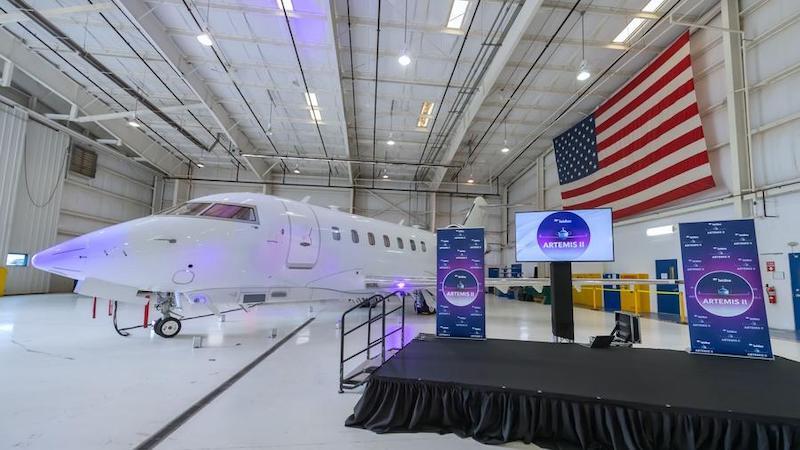Leidos To Train U.S. Army ISR Pilots As Prototype Competitions Continue

The Leidos Artemis surveillance prototype aircraft is the basis for the company’s bids for future U.S. Army programs.
Leidos will train the U.S. Army’s future high-altitude intelligence, surveillance and reconnaissance (ISR) pilots as it prepares to compete for two major programs for the service.
The company has received a $48 million contract to start training pilots in October at a rate of four per month. Leidos has assigned two Bombardier Global 6000-class aircraft for the program, which will run for 16 months at Fort Bliss, Texas.
The training is for the Army pilots who will operate the future High-Accuracy Detection and Exploitation System (HADES), says Tim Freeman, airborne solutions operations manager at Leidos.
HADES will be a fleet of Global 6500s with multi-intelligence payloads, designed to sense targets for Army long-range fires. HADES is the replacement for the service’s RC-12 Guardrail, which is based on the Beechcraft King Air, and will fly higher with longer-range sensors.
Freeman says the Army pilots will be type-certified before they arrive at Fort Bliss, where Leidos will teach them to fly the ISR mission profile. Leidos is providing FAA-certified instructor pilots, with curriculum, support materials and manuals for the missionized training. The training is unique to the Army, which does not have a substantial number of pilots who fly jet aircraft.
To get to HADES, the Army has a two-phase prototype process called the Army Theater Level High-Altitude Expeditionary Next Airborne ISR (Athena). The first phase, Athena-Radar, was awarded to MAG Aerospace in March.
The Army is expected to select the company to provide the next phase, Athena-Sensor, next month. The award will be for two aircraft with a commercial off-the-shelf radar and government-provided communications equipment to help drive the requirements for HADES. A HADES request for proposals is expected later this year ahead of a planned selection in June 2024.
Freeman says Leidos is in a unique position for the future programs because it has already been flying operational ISR missions in company-owned aircraft. Leidos has built two Bombardier Challenger 650-based ISR aircraft called the Airborne Reconnaissance and Targeting Multi-Mission System (Artemis).
The two aircraft have been flying constant surveillance missions since first deployed. They are now providing a significant amount of data in Eastern Europe amid Russia’s full-scale invasion of Ukraine. Since the aircraft are contractor-owned and contractor-operated, Leidos personnel fly and operate the sensors, with the Army able to monitor the operations.
The first aircraft was participating in the Army’s Project Convergence exercise in November 2021 when it was abruptly deployed to watch over Russia’s build-up for the war. A second aircraft was requested and quickly deployed in January 2023.
Freeman says the company had a “Field of Dreams” approach—referring to the famous movie quote “If you build it, they will come”—that became Artemis. Leidos saw the Army had the need for high-altitude ISR and self-funded the aircraft. The bet appears to have paid off given how in-demand the two aircraft have been.
The Leidos approach for the follow-up Athena-S and eventually HADES has been in the works for four years, with the company spending about $200 million to buy its Global 6500 and related equipment for its bid.
“Some of the design we’ve used on our Artemis will translate into the Athena program,” Freeman says. “It’s what we’ve been doing on Artemis, just a larger version. So what is scalable, we’ve scaled. And what’s new, we’ve already been designing.”
Leidos is competing with the MAG Aerospace and L3Harris team that won Athena-R, as well as Sierra Nevada Corp., which is building two of its Global 6500-based Rapcon-X aircraft.
